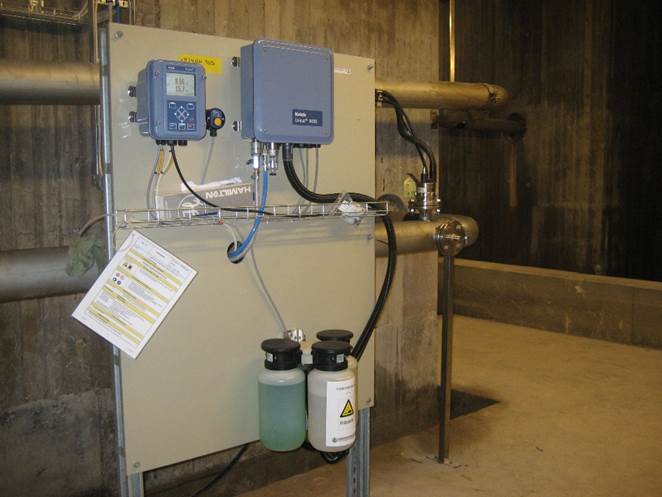pH is a measure of the acidity/basicity of water. The control of pH is important during drinking water treatment, to maximize treatment effectiveness and efficiency, and in the distribution system, to control corrosion and reduce leaching from distribution system and plumbing components.
The Water which is introduced into out drinking water system must meet the most versatile requirements concerning hygiene and certain corrosion requirements to protect the water pipes. To identify potential treatment challenges and to evaluate the technologies ,pH is one of several general water quality variables that must be considered when selecting and configuring the treatment sequences for a given water source. To achieve this, one of the a broadly used procedure is the open aeration of raw water. The raw water can contain disturbing, corrosive carbon dioxide, which is driven off by aeration. Depending on the origin of water, also iron and manganese compounds are oxidized and then filtered.
During this process the raw water is sprayed through pumps and distributed over large surface packages in so-called trickling towers. To increase the efficiency, the aeration space can be blown with air from below in counter flow process.
When the raw waters have an excess of carbon dioxide and are not in lime/carbon dioxide equilibrium, the pH value of the raw water must be increased. The water is ventilated to saturate it with oxygen and reduce the solubility of Carbon dioxide, which is partially dissolved as carbonic acid when in equilibrium, is driven off.
This increases the pH value. The raw water typically has a pH of approximately 6.5 which shall be increased to pH + 7.5. To optimize the energy input of the pumps. The pH value is continuously measured after the aeration process. At each aeration tower the aeration Pumps are controlled via the pH Value.
The pH value is measured through a bypass line in the open outlet at the existing hydrostatic pressure. Depending on the number of measuring points, transmitters of the stratos series can be used or multichannel measurements using protos analyzers can be taken.

